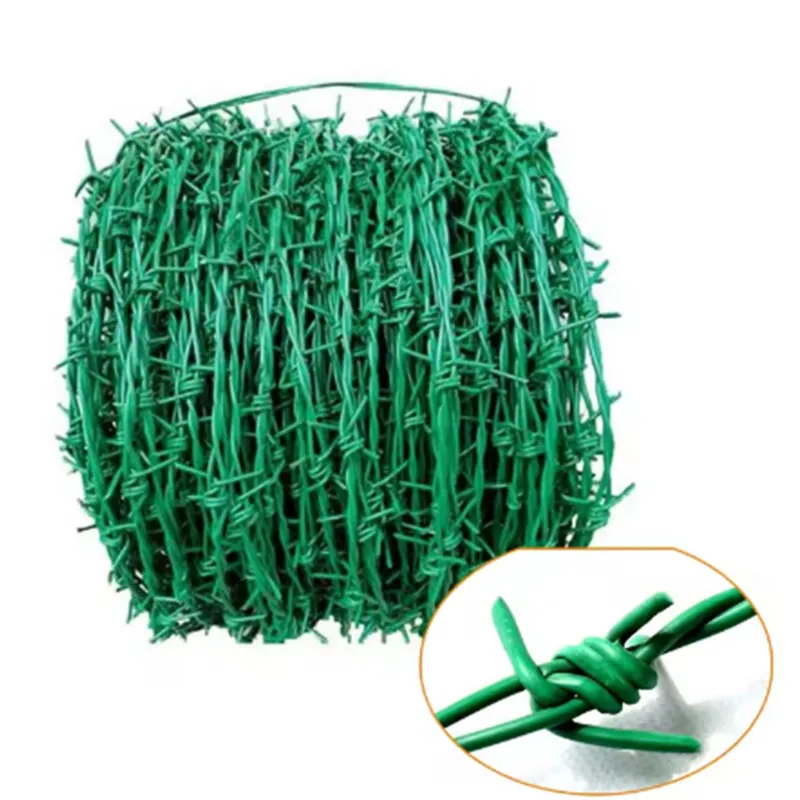-
 Phone:
Phone: -
 Email:
Email:

barbed wire fence
The Symbolism and Functionality of Barbed Wire Fences
Barbed wire fences have become an iconic representation of boundaries and security. Originally invented in the late 19th century, barbed wire served a critical role in agriculture, protecting crops and livestock from wandering animals. Over the years, its uses have expanded far beyond farming, becoming a symbol of confinement, division, and, unfortunately, conflict in various contexts around the globe.
Historical Background
The invention of barbed wire is credited to Joseph Glidden, who received a patent for his version in 1874. Prior to this innovation, wooden fences were the primary means of controlling livestock; however, these were labor-intensive and often ineffective. Glidden's design included sharp barbs placed at intervals along the wire, making it a formidable barrier. Its affordability and ease of installation made it popular among farmers, leading to a dramatic transformation in land management practices on the American frontier.
As the West expanded, barbed wire fences demarcated property lines, facilitated cattle ranching, and even contributed to the infamous range wars—conflicts arising from disputes over land and livestock access. Farmers and ranchers used barbed wire not only for practical purposes but also as a means to assert control over land that was often contested by competing interests.
Functional Aspects
The primary function of barbed wire is to serve as a deterrent. The sharp points of the barbs create a physical barrier that is difficult to breach without potential harm. This is particularly valuable in agricultural settings, where it keeps both livestock and wild animals from straying onto roads or into crops, thus reducing the risk of accidents and damage.
In modern applications, barbed wire fences are commonly found in border security, military installations, and correctional facilities. Governments across the world utilize these fences as a means of controlling movement and enhancing security. The presence of barbed wire often sends a clear message that the area is off-limits, creating an atmosphere of exclusion. This functionality is essential, particularly in politically sensitive areas where unauthorized access could have severe implications.
barbed wire fence

Psychological Symbolism
Beyond their practical uses, barbed wire fences have also acquired deep psychological and sociopolitical connotations. They evoke feelings of confinement and separation, emphasizing a stark divide between those who belong and those who do not. The very image of barbed wire often generates thoughts of imprisonment or exclusion, making it a powerful symbol in discussions about immigration, war, and human rights.
In the context of immigration, barbed wire fences have become synonymous with restrictive policies and the idea of ‘fortress nations.’ As countries erect barriers to deter unauthorized immigration, the materials, such as barbed wire, serve as tangible symbols of the fear and resistance surrounding national borders. The emotional weight that these fences carry sparks debates about human rights, mobility, and the freedom of movement—issues that are increasingly relevant in our interconnected world.
Barbed Wire in Art and Culture
The cultural implications of barbed wire extend to literature, film, and visual arts, where it often represents conflict, struggle, and resilience. Artists have used barbed wire to convey a range of emotions—from the pain of separation to the fierce determination for freedom. In literature, barbed wire may appear as a motif depicting characters' struggles against oppressive systems.
One of the most poignant uses of barbed wire in contemporary discussions is in the representation of refugee experiences. As thousands flee conflict and persecution, the barriers that are erected to keep them out often mirror their struggles for safety and humanity. This duality—the deterrent nature of barbed wire and its association with suffering—has made it a compelling subject for advocates and artists alike, highlighting the urgent need for empathy and understanding.
Conclusion
Barbed wire fences, originally designed for agricultural efficiency, have evolved to encapsulate a broad spectrum of meanings in modern society. They serve critical functional roles while simultaneously becoming powerful symbols of division, confinement, and resistance. As we navigate global challenges surrounding migration and security, the imagery of barbed wire continues to provoke important conversations about boundaries, humanity, and the complex nature of freedom. In essence, while barbed wire can keep things in or keep things out, it can also remind us of what it truly means to be connected or separated in an increasingly fragmented world.
-
Wire Mesh for Every Need: A Practical SolutionNewsJul.25,2025
-
Steel Fences: Durable, Secure, and Stylish OptionsNewsJul.25,2025
-
Roll Top Fencing: A Smart Solution for Safety and SecurityNewsJul.25,2025
-
Cattle Farm Fencing Solutions for Maximum SecurityNewsJul.25,2025
-
Affordable Iron Binding Wire SolutionsNewsJul.25,2025
-
Affordable Galvanized Wire SolutionsNewsJul.25,2025
-
Wire Hanger Recycling IdeasNewsJul.25,2025








